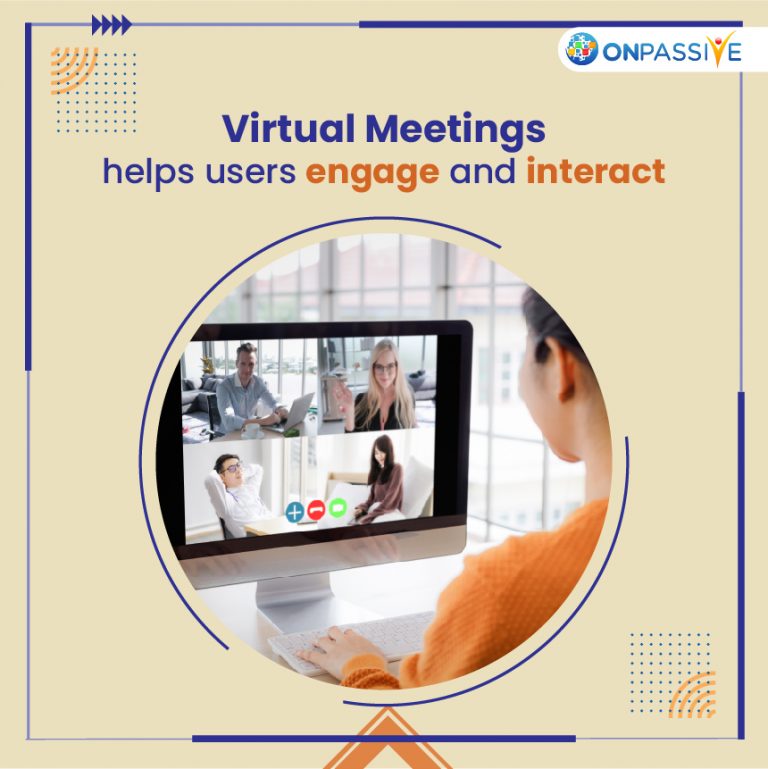
Video conferencing is no longer limited to large boardrooms for formal meetings and discussions. Today, the framework has progressed, and companies are refocusing their efforts to create a more agile work climate. Fortunately, the emergence of Artificial Intelligence technologies helps the video conferencing industry grow even further. So, first, let us understand what is AI Based Video Communication?
What is AI Based Video Communication?
For the video conferencing industry, the Covid-19 outbreak had been a turning point. To communicate with remote clients, consumers, and staff, more businesses and government agencies are turning to AI Based Video Communication.
According to a new survey, video conferencing is used by 43 percent of remote and in-house teams, and 73 percent of corporate organizations use video calling apps. It is no surprise that an increasing number of companies are investing in video-enabled huddle rooms and multi-purpose breakout areas.
AI is changing not only how we develop technology, but how we use it as well. We are now seeing a paradigm shift in technology in this new period of video conferencing, which is powered by advances in big data analytics, robotics, machine vision, and Natural language processing (NLP).
Video conferencing has also proven to be a cutting-edge technology. It becomes more complex and mature by incorporating AI applications into the mechanism. Integrating these features into everyday applications like video conferencing systems will add significant value.
If you are looking for a video conferencing software with seamless virtual connect experience, OCONNECT by ONPASSIVE is an idle product for you.
Use of AI Based Video Communication
AI is being applied to the workplace as technology progresses, and it has a wide range of uses. Video conferencing is one of them, and it will help you cut down on the amount of busywork you would otherwise have to do. Have a look at how it is used in video conferencing with AI.
Integrating NLP tools
Video conferencing devices are notoriously bad at displaying nonverbal communication’s rich vocabulary. Integrating NLP tools will create more modern apps that will improve the user experience of video conferencing by allowing text-based solutions. The following are some examples of how AI-enhanced NLP tools can be used to improve user interfaces:
- Conversations are translated into different languages.
- Automated report generation voice-based Virtual assistants would be able to respond to commands.
- Whenever one attendee is presenting, AI-powered NLP tools can automatically mute all other attendees, change audio volume, and switch off background speech.
AI-driven insights
AI greatly improves video conferencing by facilitating meeting scheduling and effectively automating post-meeting alerts. Meetings with AI would be able to handle daily meetings more effectively by automating basic tasks such as:
- Schedule and reschedule calls.
- Sending reminders.
- Prior document suggestion
- If presenting or participating in a video chat, make minor adjustments.
- Changes in pre-scheduled sessions should be communicated to attendees.
Utmost video experience
Computer vision and insightful video conferencing systems are the only ways to improve visual perception and build immersive meetings. For example, by automatically detecting visual problems, network issues, and optimizing light balance to enrich video quality, Computer Vision combined with AI can drive real-time adjustments and enhance video quality. Here are a few examples of how Computer Vision can help provide an excellent user experience.
- Individually Track and tag participants
- Improvising user experience by changing the attendee background environment.
- Frame all the participants with webcam or phone camera
- A few sophisticated machine vision improvements include auto brightening, expanding camera angles, participant focused, and video synchronization.
Embrace trust and privacy
At the end of the day, AI ensures the participants’ safety and privacy. It is well understood that when people are on a group call, most of them have confidence problems when sharing sensitive information, which they do not have these issues with during face-to-face encounters. Anomaly detection applications focused on machine learning can detect network or web breaches, ensuring the security of sensitive information shared during a meeting.
Conclusion
To summarize, AI is an efficient, dependable, and strategic video conferencing resource. Various AI-powered video conferencing tools are available and can adapt to new technical developments as required by the industry. Most experts around the world agree that AI-based video networking technologies and platforms are more effective in meetings and live chats than conventional ones. So, if you are looking for a video communication tool for your company, Contact us.


